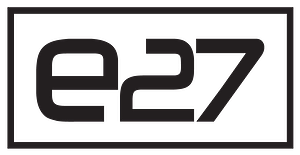AI as the New Corporate Spy: Internal Surveillance at Scale
AI-powered surveillance is transforming how enterprises monitor compliance, security, and productivity, offering unprecedented control while raising critical ethical and trust challenges.
When AI Turns Its Gaze Inward
Artificial intelligence is no longer just a customer-facing tool for personalization, analytics, or marketing automation. Increasingly, it is turning inward, becoming the eyes and ears of the enterprise itself. AI-powered internal surveillance systems are now capable of monitoring employee behavior, detecting insider threats, ensuring regulatory compliance, and even predicting misconduct before it happens.
For executives, this shift promises unparalleled control and security. But it also introduces a new layer of complexity: the risk of crossing the line into invasive oversight that erodes trust and damages corporate culture. AI as an internal corporate spy is both a powerful risk mitigation tool and a potential liability.
The Drivers Behind AI-Powered Internal Surveillance
Compliance and Regulatory Pressures
Industries under heavy regulation—such as finance, healthcare, and defense—are facing rising scrutiny from regulators and auditors. AI enables continuous, automated auditing of internal processes, making it easier to demonstrate compliance in real-time rather than relying on quarterly reviews or manual spot checks. In sectors where a single breach or compliance failure can cost millions, the appeal is clear.
Cybersecurity and Insider Threat Prevention
Traditional cybersecurity focuses on defending the perimeter. But many breaches originate inside the organization, whether through negligence, error, or malicious intent. AI surveillance systems can detect unusual access patterns, irregular file transfers, or deviations from normal work behavior. This allows security teams to intervene before sensitive data leaves the company.
Productivity and Operational Efficiency
In the era of hybrid work, productivity monitoring tools have evolved into AI-powered platforms that track keystrokes, analyze collaboration data, and assess whether teams are hitting targets. This creates a granular picture of how work is actually getting done—and whether the workforce is optimally engaged.
The Toolkit: How AI Monitors Employees
Natural Language Processing (NLP) for Communication Analysis
By scanning emails, instant messages, and even meeting transcripts, NLP models can flag language that suggests policy violations, harassment, or early signs of fraud. These systems are often integrated into corporate communications platforms, making them invisible to the end user.
Computer Vision for Workplace Monitoring
In physical offices and industrial settings, AI-enhanced cameras track movements, detect unauthorized access, and even read facial expressions to identify stress or fatigue. For manufacturing floors or hazardous zones, this means faster responses to safety risks.
Predictive Behavioral Analytics
By combining historical activity data with real-time monitoring, AI can forecast potential burnout, disengagement, or even likelihood of resignation. In HR and compliance contexts, this data can be used to proactively address risks before they escalate.
Integration with Existing Enterprise Systems
Surveillance AI does not operate in isolation. It integrates with enterprise platforms such as CRM, ERP, and security systems, creating a unified oversight layer that can correlate activities across departments and systems.
The Corporate Benefits and the Ethical Tensions
Advantages for Enterprises
From a governance perspective, the benefits are substantial. Enterprises can detect policy breaches in minutes instead of months, prevent costly insider threats, and make HR decisions backed by data rather than anecdotal impressions.
Risks and Ethical Dilemmas
Yet the same power that makes AI an effective watchdog can also create a culture of distrust. Over-monitoring can push employees to disengage or even leave, especially in competitive talent markets. Moreover, surveillance data itself becomes a high-value target for cybercriminals, introducing new security risks.
Legal exposure is another concern. Privacy regulations vary widely by jurisdiction, and a practice that is acceptable in one country may be illegal in another. Missteps can result in reputational damage and regulatory penalties.
Real-World Examples and Industry Adoption
In banking, AI scans trader communications for signs of collusion or market manipulation. In manufacturing, it ensures safety compliance by tracking employee positions relative to dangerous equipment. In remote-first companies, AI logs keystroke frequency, app usage, and meeting attendance to assess engagement levels.
These deployments demonstrate that AI surveillance is no longer experimental—it is becoming a mainstream corporate capability.
Governance: Keeping Surveillance AI in Check
Defining Acceptable Use Policies
Clear internal guidelines are critical. Employees need to know what is being monitored, why it is necessary, and how the data will be used. Ambiguity erodes trust faster than the surveillance itself.
Transparency and Consent Frameworks
Organizations that communicate openly about monitoring practices see higher employee acceptance. Providing opt-in mechanisms for certain forms of monitoring can help balance operational needs with personal autonomy.
Independent Oversight and Audit Trails
Establishing third-party oversight or internal audit committees ensures that AI surveillance is not misused. Detailed audit trails should be kept to track who accesses monitoring data and for what purpose.
The Future: From Surveillance to Trust Architectures
The next evolution of internal AI will shift from punitive oversight toward trust-based systems. These will focus on enabling safety, improving well-being, and supporting employee development rather than solely catching misconduct.
Privacy-by-design principles will become the norm, embedding safeguards directly into monitoring algorithms. Enterprises that strike the right balance between oversight and empowerment will be better positioned to attract talent, retain trust, and maintain compliance.
Conclusion: The Double-Edged Sword of Internal AI
AI-driven internal surveillance is here to stay. For executives, the challenge lies in harnessing its power without crossing ethical or legal lines. Done right, it can protect assets, enhance compliance, and strengthen the enterprise. Done wrong, it can damage culture, invite regulatory trouble, and undermine the very trust that powers high-performing organizations.



